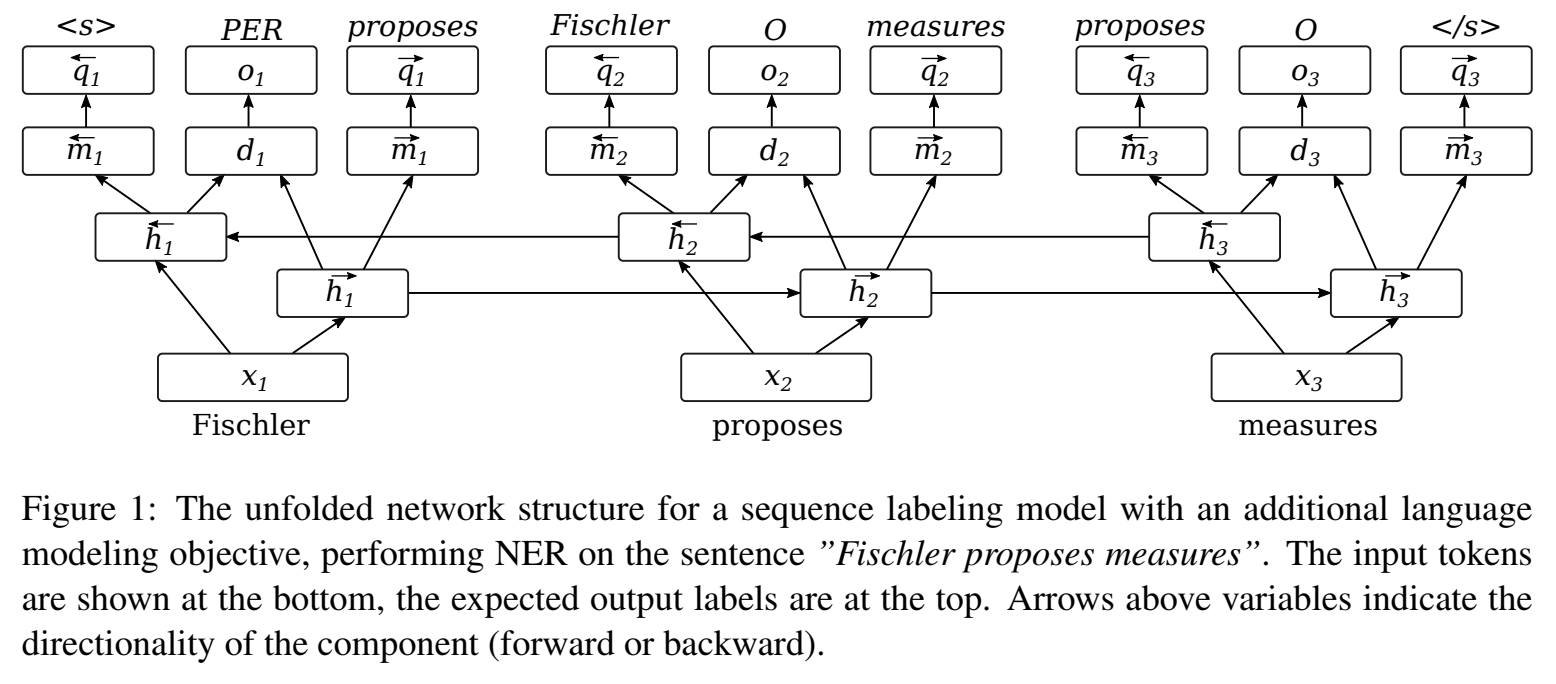papernotes
 papernotes copied to clipboard
papernotes copied to clipboard
Semi-supervised Multitask Learning for Sequence Labeling
trafficstars
Metadata
- Authors: Marek Rei
- Organization: University of Cambridge
- Conference: ACL 2017
- Link: https://goo.gl/h6p29c
Summary
This paper propose a auxiliary bidirectional language modeling objective for neural sequence labeling, and evaluated on error detection in learner texts, name entity recognition (NER), chunking and part-of-speech (POS) tagging.

Notes on the name of this paper:
- "Semi-supervised": Utilize the data without label, which is context words.
- "Multitask Learning": Jointly training on labeling and predicting context words.
Neural Sequence Labeling Model
- Bidirectional LSTM (dynamic weighting char+word embeddings)
- Concatenating forward and backward hidden state as output hidden state at each time step.
- Project each output hidden state to 1-layer feedforward net with tanh activation + softmax (or + CRF).
- Code: https://github.com/marekrei/sequence-labeler
Language Modeling Objective
Since bidirectional LSTM has access to the full context on each side of the target token, they predict the next word only from the forward-moving hidden state and the previous word only from the backward-moving hidden state. (The hidden states are mapped to 1-layer, tanh projection before projecting to context word vocabulary using softmax)
Experimental Results


